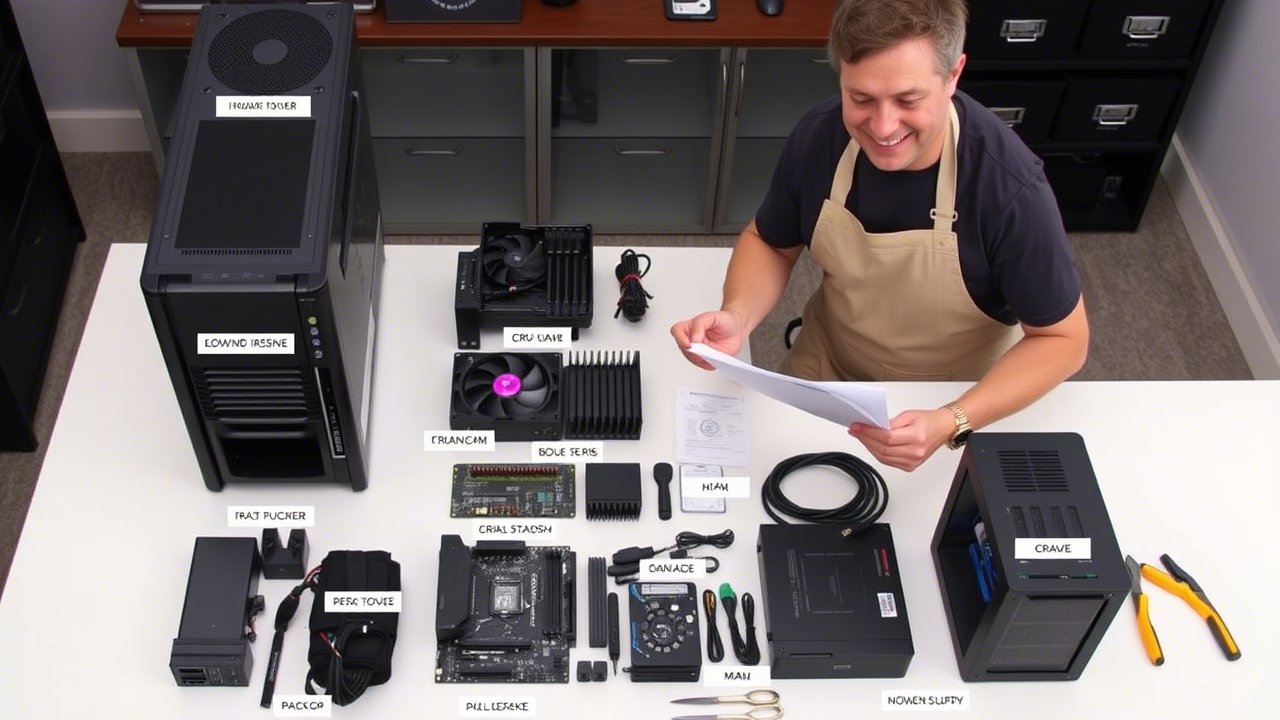Building a Budget Desktop PC Under $800: A Calm Guide to Great Performance
Building a Budget Desktop PC Under $800: A Calm Guide to Great Performance
In today’s world, a reliable desktop PC doesn’t have to break the bank. Whether you’re a student, a casual gamer, or someone who needs a solid machine for work-from-home tasks, building a PC for under $800 is not only possible but also rewarding. With careful planning and smart choices, you can create a system that balances performance, longevity, and value. Let’s walk through the process of crafting a budget-friendly desktop that delivers without the stress.

Why Build Your Own PC?
Building your own PC gives you control over every component, ensuring you get exactly what you need for your budget. It’s also a chance to learn about hardware, customize your setup, and save money compared to pre-built systems. For under $800, you can assemble a machine capable of handling everyday tasks, light gaming, and even some creative work like photo or video editing. Let’s explore how to make it happen.
Key Components and Budget Breakdown
To stay under $800, we’ll focus on components that offer the best performance for the price. Here’s a sample build with approximate costs (based on 2025 market trends) and tips for choosing each part. Prices may vary depending on sales or availability, so flexibility is key.
1. Processor (CPU): AMD Ryzen 5 5500 (~$100)
The heart of your build, the CPU, determines how smoothly your PC handles tasks. The AMD Ryzen 5 5500 is a fantastic budget option with 6 cores and 12 threads, offering strong performance for gaming, multitasking, and productivity. It’s efficient, runs cool, and pairs well with budget motherboards.
Tip: Look for bundle deals at retailers like Micro Center or Newegg to save on CPU and motherboard combos.
2. Graphics Card (GPU): NVIDIA GeForce RTX 3050 or AMD Radeon RX 6600 (~$200-$250)
For gaming or creative work, a dedicated GPU is essential. The NVIDIA RTX 3050 or AMD Radeon RX 6600 delivers solid 1080p gaming performance at a reasonable price. The RX 6600 often edges out in raw performance, while the RTX 3050 offers DLSS for smoother visuals in supported games.
Tip: Check for used or refurbished GPUs on trusted platforms to stretch your budget further, but ensure they come with a warranty.
3. Memory (RAM): 16GB DDR4 (2x8GB, 3200MHz) (~$50)
RAM keeps your system responsive during multitasking. 16GB of DDR4 at 3200MHz is the sweet spot for most budget builds, handling everything from gaming to web browsing with ease. Dual-channel kits (2x8GB) provide better performance than a single stick.
Tip: Stick to reputable brands like Corsair, G.Skill, or Crucial for reliability.
4. Storage: 1TB NVMe SSD (~$70)
A 1TB NVMe SSD offers fast boot times, quick game loading, and ample storage for apps and files. Brands like Samsung, WD, or Kingston provide reliable options at this price point. If you need more space, you can add a cheap HDD later.
Tip: Prioritize NVMe over SATA SSDs for faster performance in modern systems.
5. Motherboard: B550 Micro-ATX (~$90)
A B550 chipset motherboard supports the Ryzen 5 5500 and offers upgrade potential for future CPUs. Micro-ATX boards are affordable, compact, and fit most cases. Look for models with decent VRM cooling and at least two M.2 slots for storage.
Tip: Ensure the board has the features you need, like Wi-Fi or extra USB ports, to avoid add-on costs.
6. Power Supply (PSU): 550W 80+ Bronze (~$50)
A reliable PSU is critical for system stability. A 550W 80+ Bronze unit from brands like EVGA, Corsair, or Seasonic provides enough power for this build and leaves room for upgrades. Modular or semi-modular designs simplify cable management.
Tip: Don’t skimp on the PSU—cheap units can cause instability or damage components.
7. Case: Budget Micro-ATX Case (~$50)
A good case keeps your components cool and organized. Budget Micro-ATX cases from Cooler Master, NZXT, or Fractal Design offer decent airflow and cable management. Look for models with pre-installed fans to save on cooling costs.
Tip: Prioritize airflow over aesthetics to keep temperatures low.
8. Operating System: Windows 11 Home (~$0-$100)
You can install Windows 11 for free with a watermark or purchase a license for $100. Alternatively, explore free options like Linux (e.g., Ubuntu) if you’re comfortable with open-source software.
Tip: Students may qualify for discounted or free Windows licenses through their school.
Total Estimated Cost: $650-$750
This leaves some wiggle room for shipping, taxes, or small upgrades like extra fans or a CPU cooler.
Assembly Tips for a Stress-Free Build
Building a PC is like putting together a puzzle—take your time, and it’ll come together smoothly. Here are a few tips to keep things calm:
-
Prepare Your Space: Work on a clean, flat surface with good lighting. Keep screws organized in small containers.
-
Follow a Guide: Watch a step-by-step PC build video from creators like Linus Tech Tips or JayzTwoCents for visual guidance.
-
Check Compatibility: Use tools like PCPartPicker to ensure all components work together.
-
Ground Yourself: Touch a metal surface or wear an anti-static wrist strap to avoid damaging parts.
-
Test Before Closing: Boot the system outside the case to confirm everything works before securing components.
Performance Expectations
This $800 build is a workhorse. It can:
-
Run modern games like Fortnite, Valorant, or Elden Ring at 1080p with medium-to-high settings.
-
Handle productivity tasks like word processing, video calls, and light photo editing in Photoshop.
-
Support multitasking with multiple browser tabs, music streaming, and background apps.
-
Offer upgrade paths for more RAM, storage, or a better GPU down the line.
Final Thoughts
Building a desktop PC under $800 is an achievable goal that delivers impressive results. By choosing reliable, cost-effective components and following a clear plan, you’ll end up with a machine that meets your needs without straining your wallet. Take your time, enjoy the process, and soon you’ll have a custom PC that’s ready for work, play, or anything in between.